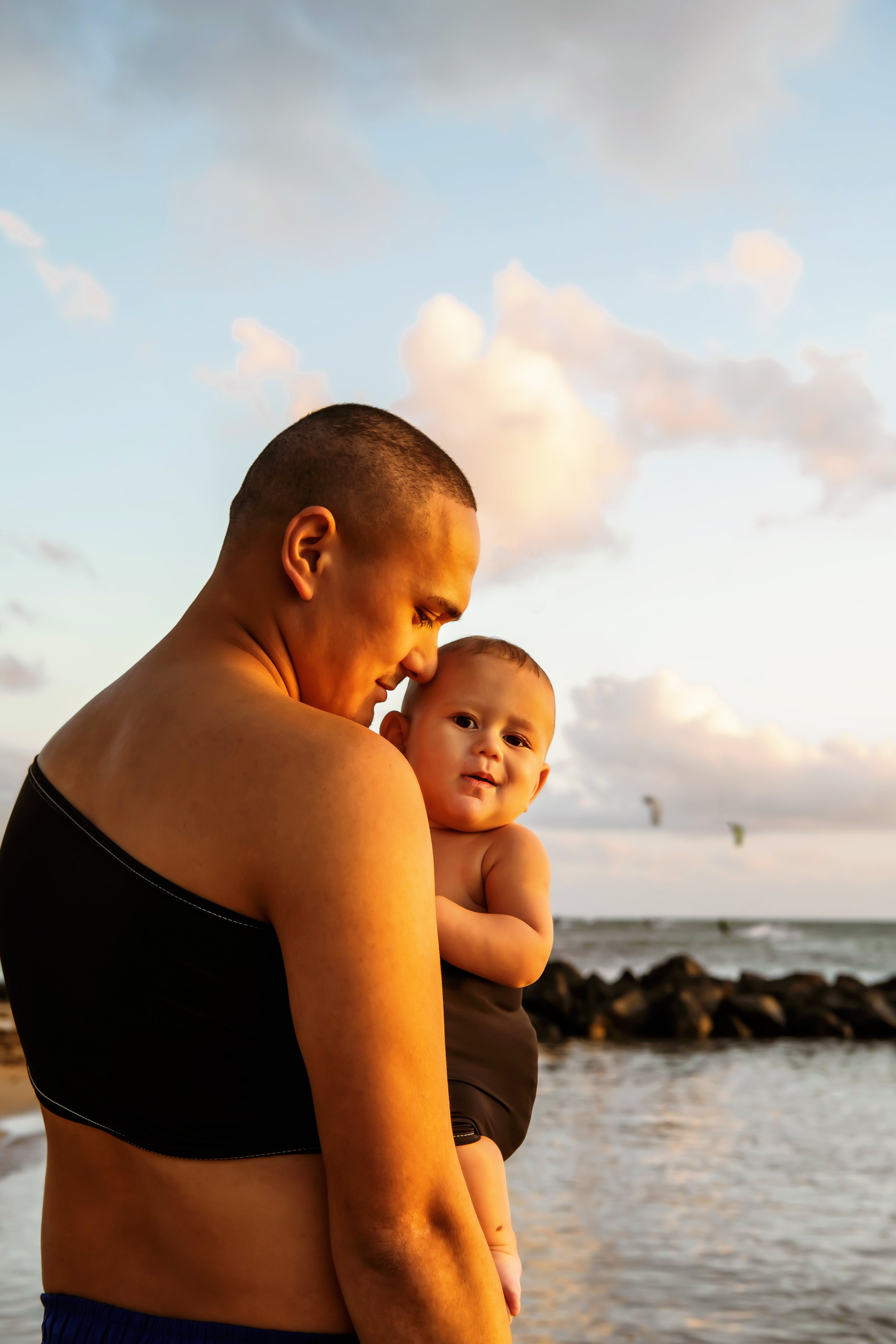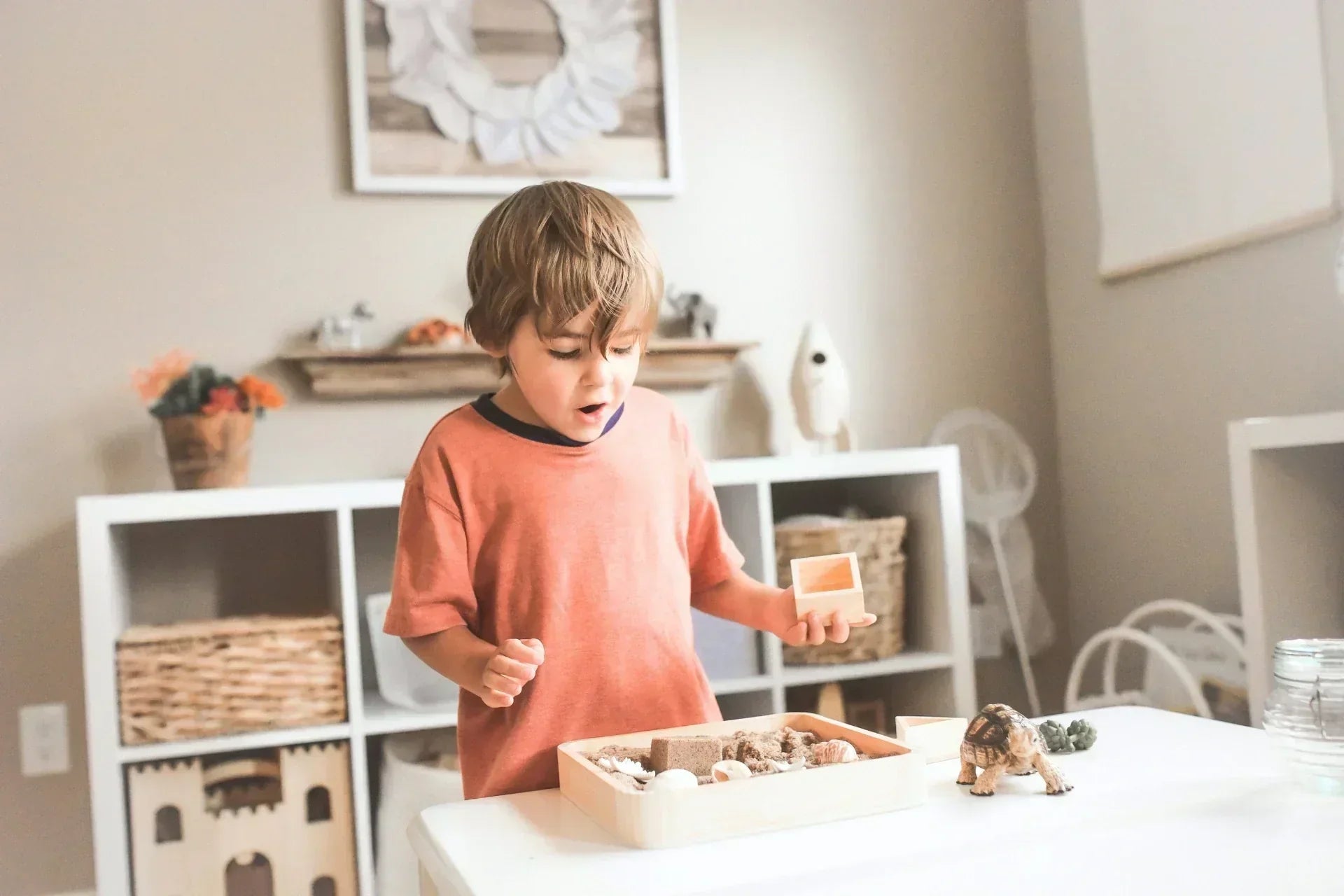The question of carrying your baby facing the outside comes up very regularly as your baby grows and becomes more interested in what's around him. Logically, when he starts to unscrew his neck to observe everything, we can be tempted to turn your baby outwards to satisfy his curiosity. We are then often asked at what age this is possible, or if our baby carriers allow it. In reality, this is a practice that is rather discouraged and in fact our baby carriers do not allow it. We explain why!
1 – respect for physiology
When we discuss the physiology of the toddler, the generic benchmarks given are to check that his base (= his pelvis) is well supported with a wide material base which extends to the hollows of the knees , that the knees come up a little higher than the axis of the hips , and that the natural roundness of his back is preserved.
When you turn your baby outwards, there are several concerns:
- It is difficult to maintain the "sitting" posture and in particular to keep the knees raised. The material gathers between the legs and we find ourselves carrying in suspension with the legs hanging down.
- While the baby carrier may be able to maintain the correct leg posture, the padding used for stabilization quickly ends up sagging and/or being too short and no longer fulfilling its role.
- The baby's back is pushed by the contours of the wearer's torso (breasts, pectorals, etc.) against which it is resting, preventing natural rounding in favor of an arch .
It's a shame to use a carrying system that claims to be respectful of the physiology of the little one only to end up with a posture that isn't!
2 – stimulations
Faced with the world, babies find themselves overwhelmed by an incredible quantity of stimuli , which their developing brain will have difficulty processing.
First of all, EVERYTHING is new and unknown to him. Lights, sounds, colors, passers-by, trees, cars, buildings, etc. Being naturally curious , he will try to observe everything in detail, which you will agree is exhausting !
It is also transported at the speed of its carrier, which being much larger than it will also go much faster , and will therefore attempt to carry out its observation work but at an accelerated pace .
Certain things are likely to frighten him , like the dog barking as you pass, or the granny rushing towards him to go "gouzi-gouzi" by touching him... In this case he will be "stuck" in front of what frightens him , without being able to avoid it, nor curl up against you, nor seek the support of your gaze.
It's a bit like landing on another planet and instead of giving you time to take everything in smoothly, you're being offered a fast-track tour! Even if you're very, very curious and really, really want to see everything really quickly, the experience wouldn't be the most pleasant or ultimately very enriching.
An overstimulated child may become nervous, tense, cry more, and have increased difficulty falling asleep .
NB: the same problem arises in a stroller and it is not recommended to put the child facing forward until he is able to move on his own.
3 – security
If the two previous points were more suggestive and subject to your personal sensitivity, this last one is on the other hand much more notable because it concerns the basic security of your carrying.
Facing the world, your child is no longer one with you, his weight is felt much more, he pulls you forward , his movements can unbalance you, and he obstructs your field of vision. This drastically increases the risk of falling forward , and that you find yourself crashing face down on the ground with your baby (himself face down). We won't draw you a picture: the consequences could be serious!
Obviously, even when carried in front of you, it is possible to fall, however the risk of this occurring is much lower because the child is less in your way and throws you off balance, and above all you will more easily succeed in protecting your little one a little or tipping to the side, and the parts that will absorb the shock will be less fragile (back of the skull and back versus face, rib cage and abdomen). It is the same principle that applies when in judo we learn not to fall forward.
“Yes, but my baby is crying out!”
Children are naturally very curious , so it's only natural that they want to see as many things as possible! Put yourself in their shoes, lying on your stomach, and in the end they can only see the underside of your neck or your shoulders (the bust line is convex and "closes" the visual field), nothing exciting, you'll agree...



First of all, let's remember that safety takes precedence over everything else, and that when your child asks for something, sometimes you unfortunately have to say no because you know it won't be good for him . For example, he would certainly be delighted to taste chocolate at 2 months, but you won't give him any. Later, he will certainly also want to cross the road alone, and again you will stop him, even if he cries.
In this case, it's not about completely restricting your little one, but rather about adapting the carrying to reconcile their desires with the comfort and safety of everyone. We can suggest several adjustments depending on the context:
- Carrying on the back: this carrying is possible very early (from birth with a sling), and allows the baby to be carried in the direction of travel, and to see over the shoulder of the carrier or to the sides (the posture of the back offers a convex curvature which opens the field of vision). When there are too many stimuli, he can take refuge against his carrier.
- Side carry : Off-center carrying allows the baby to better see their surroundings while maintaining eye contact with the wearer. A sling is very practical in this configuration.
And by arm?
The above points are especially relevant when carrying with a tool. The analysis is slightly different when carrying with a hand:
- We generally carry by arm indoors , in an environment that is less stimulating than the outdoors and that the child is familiar with.
- Carrying is intended to last a short time (these little creatures quickly get heavy!) which also reduces fatigue and agitation.
- The carrier constantly interacts with their baby: either through their gaze and speech, or through their gestures, as they continuously change the position and way of carrying depending on their child's movements.
- In the event of a fall, it is easier to protect your baby.

Carrying the child facing the world in the arms is in fact much less problematic than in a baby carrier. We can recommend positions more on the side to encourage exchanges, and with a child supported in a sitting position by the outside of the knee and not with the hand between the legs (promotes extended positions and wrist pain).
Special cases :
The advice given above applies to the general case, but there are several situations where it will be necessary to qualify it! Non-exhaustively, we can mention:
- The carrier's disability : a parent in a wheelchair, for example, might have difficulty placing their child facing them
- A child with a device (club feet for example): some devices can injure the wearer and/or the baby and require installations facing the world
- Babies with reflux : Some children with gastroesophageal reflux completely refuse to be positioned facing the carrier, and it may be helpful to find adjustments to face the world.
So, apart from special cases, as you will have understood, carrying the baby facing the world using a carrying system is not recommended. The fact that it is offered by several brands and baby carriers unfortunately does not guarantee that it is wise and suitable.
Is your baby moaning in front of you? Don't hesitate to get help from a babywearing instructor to adjust your setup and find solutions that work for you!





